HDMI เข้ามาแทนที่สายสัญญาณ DVI ในปี 2002 นับจากนั้นเป็นต้นมา HDMI ก็กลายเป็นตัวเลือกในการส่งสัญญาณวิดีโอและเสียงที่ได้รับความนิยมสูงสุด HDMI (High-Definition Multimedia Interface) นำเสนอเทคโนโลยีที่ล้ำหน้าที่สุดด้วยแบนด์วิดท์มหาศาล 48Gbps รองรับ eARC, Dynamic HDR, Dolby Vision และการซิงค์แบบปรับได้ด้วยความละเอียด 8K อย่างไรก็ตาม HDMI จะต้องอาศัยตัวนำไฟฟ้าในการส่งสัญญาณ ซึ่งทำให้ความยาวของสายมีข้อจำกัด ซึ่งหากเกินขีดจำกัดนี้ คุณภาพของสัญญาณจะเริ่มลดลง
ความยาวสูงสุดของสายเคเบิลอาจขึ้นอยู่กับปัจจัยต่างๆ เช่น ประเภทของสัญญาณ คุณภาพของสายเคเบิล และข้อกำหนดความละเอียด บทความนี้จะช่วยให้ผู้อ่านเข้าใจปัจจัยเหล่านี้อย่างลึกซึ้ง และอธิบายว่าทำไมสัญญาณจึงลดลงตามความยาวของสายเคเบิล นอกจากนี้ บทความนี้ยังจะให้คำแนะนำเกี่ยวกับวิธีที่ผู้ใช้สามารถใช้สายเคเบิลให้ยาวที่สุด สาย HDMI ความยาวโดยไม่กระทบต่อคุณภาพสัญญาณวิดีโอ
สารบัญ
ภาพรวมอย่างรวดเร็ว
- คุณภาพสัญญาณลดลงเนื่องจากความต้านทานในสาย HDMI ทองแดงมาตรฐาน
- ความละเอียดสูงและอัตราการรีเฟรชต้องใช้สายเคเบิลที่หนาและสั้นกว่า
- ใช้เครื่องขยายสัญญาณสำหรับการส่งสัญญาณ HDMI ในระยะทางที่ยาวขึ้น
- สายออปติคัลแบบแอคทีฟเหมาะที่สุดสำหรับการส่งสัญญาณคุณภาพสูงแบบไร้สิ่งรบกวน
- คุณภาพของสายเคเบิล การโค้งงอ ความละเอียด และอัตราการรีเฟรชอาจส่งผลต่อความยาวสูงสุดของสายเคเบิล HDMI
ข้อจำกัดความยาวของสาย HDMI มาตรฐาน
ความยาวของสาย HDMI มาตรฐานที่เสื่อมสภาพสัญญาณ
สาย HDMI มาตรฐานหรือที่เรียกอีกอย่างว่าสาย HDMI แบบพาสซีฟ ประกอบด้วยสายทองแดงที่ส่งสัญญาณอิเล็กทรอนิกส์ในรูปแบบของไฟฟ้าผ่านสายต่างๆ สาย HDMI 2.1 ทั่วไปจะมีสาย 19 เส้นที่ส่งสัญญาณเสียงและวิดีโอหลายสัญญาณ สัญญาณอิเล็กทรอนิกส์จะเป็นเลข 1 หรือ 0 ที่เดินทางเป็นแพ็กเก็ต อย่างไรก็ตาม เนื่องมาจากความต้านทานในสาย จึงทำให้แพ็กเก็ตบางแพ็กเก็ตไม่สามารถไปถึงปลายอีกด้านของสายได้
ทองแดงเป็นตัวนำไฟฟ้าที่ดี แต่ยังคงต้านทานการไหลของอิเล็กตรอนที่เคลื่อนที่ได้ การลดทอนอิเล็กตรอนทำให้สัญญาณเสื่อมลง การเพิ่มความยาวของสายเคเบิลหมายถึงความต้านทานของสายเคเบิลจะเริ่มเพิ่มขึ้น ซึ่งเป็นข้อจำกัดด้านความยาวสำหรับสายเคเบิล HDMI ผู้ผลิตมักจะชดเชยความต้านทานโดยเพิ่มความหนาของสายเพื่อปรับปรุงการนำไฟฟ้า สูตรสำหรับความต้านทานของสายนั้นง่ายมาก:
⍴ = ค่าคงที่ของสายทองแดง
L = ความยาวของสายเคเบิล
A = พื้นที่หน้าตัดของสายไฟภายในสายเคเบิล (ความหนาของสายไฟ)
สาย HDMI ทองแดงมาตรฐานที่มีความยาวเหมาะสมจะมีขนาดสาย 26 เกจ (มีเส้นผ่านศูนย์กลางประมาณ 0.45 นิ้ว) สำหรับสัญญาณ 4K ประสิทธิภาพของสาย HDMI ทองแดงมาตรฐานอาจเริ่มลดลงที่ความยาว 20 เมตร และสำหรับความละเอียด 8K อาจลดลงที่ความยาวประมาณ 15 เมตร
ปัจจัยที่สร้างข้อจำกัดความยาว
ข้อจำกัดความยาวของสาย HDMI อาจขึ้นอยู่กับปัจจัยหลายประการนอกเหนือจากความต้านทานของสาย ต่อไปนี้คือปัจจัยที่ก่อให้เกิดข้อจำกัดความยาวของสาย HDMI:
- คุณภาพสายเคเบิล:ดังที่สูตรความต้านทานของสายแบบง่ายๆ ระบุไว้ การใช้สายคุณภาพสูงภายในสาย HDMI จะช่วยปรับปรุงความต้านทาน (⍴) การใช้ทองแดงที่มีสิ่งเจือปนน้อยกว่าจะทำให้ส่งสัญญาณได้ดีขึ้นและมีความต้านทานน้อยลง
- การดัดและเดินสายเคเบิล:การเดินสายเคเบิล เช่น โปรเจ็กเตอร์และป้ายดิจิตอล เป็นสิ่งจำเป็นในการติดตั้งที่จำเป็นต้องใช้สาย HDMI ยาว การดัดสายเคเบิลระหว่างการเดินสายเคเบิลอาจเปลี่ยนแปลงความต้านทานของสายเคเบิล ส่งผลให้สัญญาณลดลง ควรดัดสายเคเบิลตามคำแนะนำของผู้ผลิตเสมอ
- ปณิธาน:จำนวนพิกเซลที่คุณผลักผ่านสาย HDMI จะทำให้สายเกิดความเครียด การถ่ายโอนข้อมูลจำนวนมากต้องใช้สายที่มีคุณภาพสูงกว่าและมีความยาวสั้นกว่า

- อัตราการรีเฟรช:จำนวนหน้าจอต่อวินาทีที่มากขึ้นต้องอาศัยการถ่ายโอนข้อมูลมากขึ้น จึงจำกัดความยาวของสาย
ผลกระทบของความละเอียดสูงและอัตราการรีเฟรชสูงต่อความยาวสายเคเบิล
ความละเอียดสูงและความยาวสาย HDMI
ความละเอียดคือจำนวนพิกเซลบนหน้าจอ ความละเอียดสูงหมายถึงจำนวนพิกเซลบนหน้าจอขนาดเดียวกันที่มากขึ้น ซึ่งทำให้ได้ภาพที่มีคุณภาพคมชัดและแม่นยำ อุปกรณ์คำนวณจะส่งข้อมูลของแต่ละพิกเซลไปยังจอภาพเป็นจำนวนครั้งที่กำหนดในหนึ่งวินาที จอภาพจะถอดรหัสข้อมูลและเปลี่ยนสีของพิกเซลตามนั้น จำนวนพิกเซลที่มากขึ้นหมายความว่าจำเป็นต้องถ่ายโอนข้อมูลผ่านสาย HDMI มากขึ้น
สายเคเบิลระดับไฮเอนด์สามารถถ่ายโอนข้อมูลได้ 48Gbps ซึ่งหมายความว่าสัญญาณไฟฟ้าจำนวนมากจะเดินทางระหว่างจอภาพและอุปกรณ์คอมพิวเตอร์ ซึ่งต้องใช้สายเคเบิลคุณภาพสูงที่มีความต้านทานต่ำ การทำสายเคเบิลที่มีเส้นผ่านศูนย์กลางที่เหมาะสม 19 เส้นจะทำให้สายเคเบิลมีความหนาเพิ่มขึ้น หากมีความหนาเฉพาะที่มากกว่านั้น สายเคเบิลก็จะหนักเกินไปและไม่สามารถใช้งานได้
ดังนั้น สายเคเบิล HDMI 2.1 ที่มีเส้นผ่านศูนย์กลางลวดที่เหมาะสมจึงสามารถส่งสัญญาณความละเอียดสูงได้ เช่น 8K ด้วยการส่งสัญญาณที่ดีที่สุดที่ความยาวสายเคเบิล 15 ม. (50 ฟุต) อย่างไรก็ตาม การลดความละเอียดลงเหลือ 4K บนสายเคเบิลเดียวกันสามารถปรับปรุงคุณภาพสัญญาณได้ เนื่องจากปริมาณการถ่ายโอนข้อมูลลดลงครึ่งหนึ่ง

การสูญเสียสัญญาณที่อัตราการรีเฟรชสูงในสาย HDMI
อัตราการรีเฟรชคือจำนวนครั้งที่พิกเซลเปลี่ยนสีในหนึ่งวินาที ในระดับที่ใหญ่กว่านี้ เราสามารถพูดได้ว่าจำนวนครั้งที่จอภาพเปลี่ยนแปลงในหนึ่งวินาที ซึ่งจะแสดงเป็นเฮิรตซ์ จอภาพสมัยใหม่ทั่วไปจะมีอัตราการรีเฟรชที่ 60 เฮิรตซ์ อย่างไรก็ตาม จอภาพสำหรับเล่นเกมหรือระดับไฮเอนด์อาจมีอัตราการรีเฟรชสูงถึง 360 เฮิรตซ์ อย่างไรก็ตาม มีเงื่อนไขบางประการเมื่อพูดถึงสายเคเบิล
การเพิ่มอัตราการรีเฟรชเป็น 120Hz หมายความว่าข้อมูลจะต้องผ่านสาย HDMI มากขึ้นในหนึ่งวินาที ซึ่งมากกว่า 60Hz ซึ่งมีข้อกำหนดในการส่งข้อมูลเพียงครึ่งเดียว ในท้ายที่สุด ข้อมูลทั้งหมดที่ส่งผ่านสายจะอยู่ในรูปแบบของสัญญาณ ไม่ว่าจะเป็นสัญญาณไฟฟ้าหรือออปติคัล อัตราการรีเฟรชที่สูงหมายถึงการถ่ายโอนข้อมูลมากขึ้น ทำให้เกิดคอขวดในสายที่มีความยาวมาก
โดยทั่วไป สายเคเบิล HDMI 2.1 ระดับไฮเอนด์ความยาว 15 ม. สามารถรองรับอัตราการรีเฟรช 60Hz ที่ความละเอียด 8K การเพิ่มความยาวจะทำให้ผู้ใช้ต้องประนีประนอมเพื่อหาสมดุลระหว่างอัตราการรีเฟรชและความละเอียด เทคโนโลยี HDMI 2.1b ล่าสุดต้องการการถ่ายโอนข้อมูล 48Gbps เพื่อผลักดันขีดจำกัดฮาร์ดแวร์สูงสุดที่เป็นไปได้ 8K@60Hz. Howeเวอร์ สายเดียวกันยังใช้งานได้ด้วย 4K@144Hz mode-

โซลูชัน HDMI ที่มีความละเอียดสูงและอัตราการรีเฟรชสูงจาก CABLETIMES
การค้นหาสายเคเบิล HDMI 2.1 ที่รองรับ 8K และคุณภาพระดับพรีเมียมของแท้อาจเป็นเรื่องท้าทาย การปรากฏของสินค้าลอกเลียนแบบบนเว็บไซต์อีคอมเมิร์ซอาจทำให้เข้าใจผิดได้ ส่งผลให้ประสิทธิภาพการทำงานไม่แม่นยำ
พิจารณา สาย HDMI CABLETIME สำหรับโครงการของคุณ เนื่องจากผลิตภัณฑ์แต่ละชิ้นได้รับการรับรอง HDMI อย่างเป็นทางการ กลุ่มผลิตภัณฑ์ของพวกเขาประกอบด้วยสายเคเบิลเกรดพรีเมียมสำหรับการติดตั้งในสำนักงานและที่บ้าน หากคุณต้องการระยะการส่งข้อมูลที่ยาวนานขึ้นในฐานะผู้ใช้ระดับมืออาชีพ CABLETIME ก็มีกลุ่มผลิตภัณฑ์ที่หลากหลายซึ่งเหมาะกับการใช้งานต่างๆ ต่อไปนี้คือปัจจัยสำคัญบางประการที่ทำให้ CABLETIME เป็นโซลูชัน HDMI ที่เหมาะสำหรับการแสดงผลความละเอียดสูงและอัตราการรีเฟรชสูง:
- ความเข้ากันได้ย้อนหลังกับเวอร์ชัน HDMI รุ่นเก่า
- ขั้วต่อชุบทอง 24K เพื่อประสิทธิภาพที่ยาวนาน
- สาย HDMI ความเร็วสูงพิเศษที่ผ่านการรับรอง
- บรรจุภัณฑ์มาพร้อมกับภาพโฮโลแกรมที่สามารถสแกนได้ด้วยแอปรับรองสาย HDMI
- มีรหัส QR บนบรรจุภัณฑ์เพื่อการยืนยันตัวตน
- ปลอกหุ้มสายเคเบิลมาพร้อมกับการพิมพ์ข้อความสายเคเบิล HDMI ความเร็วสูงพิเศษ
- CABLETIME ใช้ฉลากโลโก้สาย HDMI มาตรฐาน
- รองรับการถ่ายโอนข้อมูล 48Gbps พร้อมรูปแบบสี HDR 4:4:4, Dolby Vision 7.1 CEC, EDID, HDCP 2.2, DTS-HD Master Audio, Dolby Atmos และ Enhanced Audio Return Channel (eARC)
เครื่องขยายสัญญาณและสาย HDMI ไฟเบอร์ออปติก

ความยาวสาย HDMI และความจำเป็นในการใช้เครื่องขยายสัญญาณ
ตามที่ได้กล่าวไว้ สาย HDMI 2.1 ที่ใช้งานได้ที่ 8K@60Hz or 4K@144Hz can ให้คุณภาพสัญญาณที่บริสุทธิ์ถึง 5 เมตร เราสามารถขยายความยาวได้ถึง 15 เมตรโดยลดภาระของสายเคเบิลผ่านการปรับความละเอียดและอัตราการรีเฟรช HDMI 2.สายเคเบิล 0 สามารถขยายได้ถึง 20 เมตร หากต้องการถ่ายโอนข้อมูลเพียง 18Gbps ด้วย 4K@60Hz. Howeเราจำเป็นต้องมีเครื่องขยายสัญญาณหากต้องการขยายความยาวสายเคเบิลโดยไม่กระทบต่อความละเอียดและอัตราการรีเฟรช
เครื่องขยายสัญญาณช่วยให้มั่นใจได้ว่าคุณภาพสัญญาณจะไม่ลดลงเมื่อส่งสัญญาณเสียงและวิดีโอผ่านสายเคเบิล เครื่องขยายสัญญาณมีอยู่ 2 ประเภทหลักๆ ดังนี้
- HDMI Extender ผ่านสายเคเบิลใยแก้วนำแสง
การใช้สัญญาณออปติคอลและสายเคเบิลเพื่อถ่ายโอนสัญญาณ HDMI ในระยะทางยาวจำเป็นต้องใช้ HDMI Over Optical Fiber Extender ตัวขยายสัญญาณบางรุ่นสามารถส่งสัญญาณความละเอียด 4K ได้ในระยะทาง 10 กม. โดยไม่ทำให้สัญญาณเสื่อมคุณภาพ อย่างไรก็ตาม ต้องใช้แหล่งจ่ายไฟภายนอกจึงจะใช้งานได้ ตัวขยายสัญญาณเหล่านี้เหมาะอย่างยิ่งสำหรับโครงการที่ต้องใช้สายเคเบิลจำนวนมากหรือส่งสัญญาณภาพในระยะทางยาว อย่างไรก็ตาม มีข้อเสียคือ สายเคเบิลเหล่านี้มักมีราคาแพง และสายเคเบิลใยแก้วนำแสงไม่มีความทนทานต่อการสึกหรอเท่ากับสายเคเบิล HDMI
- HDMI Extender ผ่าน LAN อีเทอร์เน็ต
สายอีเธอร์เน็ตหรือ CAT เป็นส่วนประกอบเครือข่ายมาตรฐานที่ส่งสัญญาณอินเทอร์เน็ตไปยังอุปกรณ์คอมพิวเตอร์ ซึ่งแตกต่างจากสาย HDMI สายเหล่านี้มีความต้านทานต่ำและสามารถส่งสัญญาณระยะไกลได้ เครื่องขยายสัญญาณ HDMI ที่ใช้อีเธอร์เน็ตจะมีขั้วต่อ HDMI ที่ปลายด้านหนึ่งและขั้วต่ออีเธอร์เน็ตที่ปลายอีกด้านหนึ่ง ตัวแปลง HDMI เป็นอีเธอร์เน็ตสองชุดสามารถทำให้เครื่องขยายสัญญาณที่ใช้สายอีเธอร์เน็ตสมบูรณ์ได้ เทคโนโลยีการเพิ่มสัญญาณในปัจจุบันสามารถรองรับ 4K@120hz usinขยายสัญญาณ HDMI ผ่านสายเคเบิล Ethernet LAN Cat6 โดยรักษาคุณภาพสัญญาณที่ดีได้ไกลถึง 30 เมตร (100 ฟุต)
สาย HDMI ไฟเบอร์ออปติกสำหรับความยาวสายที่พิเศษ
ตามที่ได้กล่าวไว้ก่อนหน้านี้ การส่งข้อมูล HDMI 2.1 ที่ความเร็ว 48Gbps จะจำกัดความยาวของสายเคเบิล ข้อจำกัดนี้เกิดจากความต้านทานของสายเคเบิลทองแดงที่ส่งสัญญาณไฟฟ้าระหว่างอุปกรณ์คอมพิวเตอร์และจอภาพเป็นหลัก อย่างไรก็ตาม ผู้ผลิตสายเคเบิล HDMI ระดับไฮเอนด์ได้คิดค้นโซลูชันไฮบริดเฉพาะตัวเพื่อเพิ่มความยาวของสายเคเบิลด้วยการส่งสัญญาณที่ไม่มีการสูญเสีย
สาย AOC (Active Optical Cable) เป็นเทคโนโลยีล่าสุดในการส่งสัญญาณ HDMI ผ่านสายเคเบิล แม้ว่าการลดทอนระยะทาง การลดทอนความถี่ การสะท้อนสัญญาณ การกระเจิงสัญญาณ และการดูดซับสัญญาณจะส่งผลต่อการส่งข้อมูลผ่านสายเคเบิลใยแก้วนำแสง แต่สิ่งเหล่านี้จะเริ่มเกิดขึ้นในระยะทางที่ไกลเป็นกิโลเมตร

สายเคเบิล AOC ประกอบด้วยสายทองแดงบิดเกลียว 7 ถึง 9 คู่ที่ล้อมรอบเส้นใยแก้ว 4 เส้น สายเคเบิล HDMI 2.1 ทั่วไปสามารถส่งสัญญาณพลังงาน ข้อมูล อีเทอร์เน็ต เสียง และวิดีโอได้ตลอดความยาว สายเคเบิล AOC แปลงสัญญาณที่ต้องการทรัพยากรมากที่สุดให้เป็นสัญญาณออปติก โดยใช้เครื่องรับส่งสัญญาณออปติกที่ฝังอยู่ในส่วนขั้วต่อของสายเคเบิล เทคนิคนี้ทำให้สายเคเบิลสามารถส่งสัญญาณได้ตลอด 100 เมตร ความยาวที่พิเศษนี้เหมาะสำหรับโฮมเธียเตอร์ระดับไฮเอนด์และสภาพแวดล้อมระดับมืออาชีพ
ลองพิจารณาสายออปติคอลแอคทีฟ AOC คุณภาพสูงของ CABLETIME ซึ่งให้ความสามารถในการส่งสัญญาณเสียงและวิดีโอที่ยอดเยี่ยมในระยะไกล รวมถึงการส่งสัญญาณแบบไร้เสียงรบกวนในระยะทางมากกว่า 100 เมตร สาย HDMI มาตรฐานสามารถส่งสัญญาณได้เพียง 15-20 เมตรที่ความละเอียดสูง ในทางกลับกัน สาย AOC ของ CABLETIMES สามารถส่งสัญญาณได้ 8K@60Hz and 4K@144Hz at ความยาวมาก สายเคเบิลเหล่านี้มีตัวรับส่งสัญญาณออปติคอลภายในขั้วต่อที่แปลงสัญญาณไฟฟ้าเป็นสัญญาณออปติคอลเพื่อขจัดปัญหาความต้านทานที่เกี่ยวข้องกับสายทองแดง
การเลือกใช้สาย HDMI ในการใช้งานจริง

การเลือกสาย HDMI ตามแอพพลิเคชั่น
สาย HDMI มีคุณสมบัติในการส่งสัญญาณเสียง วิดีโอ อีเธอร์เน็ต และข้อมูลความคล่องตัวของสาย HDMI เหล่านี้ทำให้สามารถใช้งานได้ในสถานการณ์ต่างๆ การเลือกประเภทสาย HDMI ที่แม่นยำที่สุดนั้นถือเป็นสิ่งสำคัญเพื่อให้แน่ใจว่าคุณจะไม่ต้องจ่ายเงินมากเกินไปหรือเผชิญกับปัญหาความเข้ากันไม่ได้เมื่อใช้งานการตั้งค่าของคุณ ต่อไปนี้คือการใช้งานทั่วไปของสาย HDMI:
การเชื่อมต่อพีซีสำหรับเล่นเกม
ความต้องการความละเอียดและอัตราการรีเฟรชสูงสุดมักเกี่ยวข้องกับการเล่นเกมบนพีซี เกมและการ์ดจอสมัยใหม่สามารถเพิ่มความละเอียด 4K ได้ที่ 144Hz ดังนั้นจึงจำเป็นต้องใช้สายเคเบิลแสดงผลเพื่อรองรับอัตราการส่งข้อมูลดังกล่าว สายเคเบิล HDMI 2.1b ทองแดงมาตรฐานเหมาะที่สุดสำหรับการเชื่อมต่อพีซีสำหรับเล่นเกม เนื่องจากสามารถรองรับความเร็ว 48Gbps พีซีสำหรับเล่นเกมมักจะอยู่ใกล้กับหน่วยแสดงผล ดังนั้นจึงไม่จำเป็นต้องใช้สายเคเบิล AOC อย่างไรก็ตาม หน่วยแสดงผลในปัจจุบันมีพอร์ตเสียง การซิงค์แบบปรับได้ และการส่งผ่าน USB ซึ่งสามารถใช้ประโยชน์จากความสามารถของสายเคเบิล HDMI 2.1b ได้
คอนโซลเกม
ทั้ง PS5 และ Xbox Series X รองรับความละเอียด 8K และอัตราการรีเฟรช 120Hz เทคโนโลยี HDMI 2.1b จำเป็นต้องใช้สายเคเบิล HDMI 2.1b ที่ได้รับการรับรอง ความหนาของสายไม่จำเป็นต้องมากสำหรับคอนโซลเกม เนื่องจากคอนโซลเกมมักจะวางอยู่ใกล้กับทีวีหรือหน่วยแสดงผลอื่นๆ สายเคเบิล HDMI 2.1 แบบบางพิเศษก็เพียงพอที่จะให้เล่นเกมด้วยความละเอียดสูงและอัตราการรีเฟรช
ระบบโฮมเธียเตอร์
สาย HDMI ช่วยลดจำนวนการเชื่อมต่อกับระบบโฮมเธียเตอร์ได้อย่างมาก เทคโนโลยีต่างๆ เช่น ARC, Ethernet และ CEC ทำให้การเชื่อมต่อกับอุปกรณ์เสียงและวิดีโอเป็นเรื่องง่ายขึ้น ระบบโฮมเธียเตอร์ทำหน้าที่เป็นฮับที่เชื่อมต่ออุปกรณ์เสียงและวิดีโอ โดยทั่วไประบบเหล่านี้มีไว้สำหรับรับชมภาพยนตร์ เพลง หรือวิดีโอ
อุตสาหกรรมความบันเทิงสมัยใหม่ยังคงใช้ 60Hz เป็นมาตรฐาน ดังนั้นการเพิ่มอัตราการรีเฟรชให้สูงกว่านั้นจึงไม่เกี่ยวข้อง หากคุณมีโทรทัศน์ความละเอียด 4K ที่เชื่อมต่อกับระบบโฮมเธียเตอร์ ให้เลือกสาย HDMI 2.0 ยาว 50 ฟุต หากคุณมีจอภาพที่รองรับ 8K ให้เลือกสาย HDMI 2.1 ของ AOC เพื่อการติดตั้งและการเดินสายที่ง่ายดาย
ห้องประชุม
การติดตั้งอุปกรณ์ในห้องประชุมต้องใช้แนวทางที่เรียบง่าย การเดินสายภายในผนังเป็นสิ่งสำคัญเพื่อให้ดูสะอาดและเป็นระเบียบ โปรเจ็กเตอร์เป็นโหมดการแสดงผลมาตรฐานในห้องประชุม จึงจำเป็นต้องใช้สาย HDMI AOC สำหรับระยะทางไกล สายสามารถยาวได้ถึง 50 เมตร ซึ่งมีพื้นที่สำหรับการเดินสาย
ระบบป้ายดิจิตอล
สายสัญญาณป้ายดิจิทัลต้องยาวเป็นพิเศษ โดยยาวได้ถึง 100 เมตรหรืออาจยาวเป็นกิโลเมตร ในกรณีนั้น เครื่องขยายสัญญาณถือเป็นตัวเลือกที่ดีที่สุด ผู้ติดตั้งสามารถเลือกใช้ตัวแปลง HDMI เป็นออปติคัลหรือตัวแปลง HDMI เป็นอีเทอร์เน็ตเป็นโซลูชันสำหรับการติดตั้งของตนได้
เทคโนโลยีแห่งอนาคตและความยาวสาย HDMI
HDMI 2.1b: ก้าวกระโดดสู่อนาคต
HDMI2.1bi-ช่องต่อสัญญาณเป็นเทคโนโลยีล่าสุดสำหรับการส่งสัญญาณเสียงและวิดีโอ ซึ่งมาแทนที่เวอร์ชันก่อนหน้าด้วยการนำ Source-Based Tone Mapping (SBTM), eARC และการรองรับ QFT มาใช้
- การแมปโทนตามแหล่งที่มา (SBTM):คุณสมบัติใหม่ทั้งหมดช่วยให้แหล่งที่มา เช่น พีซีหรือคอนโซลเกม สามารถช่วยในการทำแผนที่ HDR ได้
- eARC:รูปแบบที่ปรับปรุงของ ARC (Audio Return Channel) ช่วยให้รองรับ Dolby Atmos, DTS:X และรูปแบบเสียงแบบออบเจกต์ โดยรองรับความถี่ 384 kHz เมื่อเทียบกับรุ่นก่อนหน้าที่รองรับเพียง 192 kHz
- แบนด์วิธ:สาย HDMI 2.1 รองรับ 48Gbps เมื่อเทียบกับสาย HDMI 2.0 รุ่นก่อนหน้าที่สามารถรองรับได้เพียง 18Gbps เท่านั้น
- การรองรับ HDR แบบไดนามิก:เทคโนโลยีจะปรับความสว่าง ความคมชัด และพารามิเตอร์สีแบบทีละฉากหรือแม้กระทั่งแบบเฟรมต่อเฟรม
สาย HDMI ขั้นสูงและการเชื่อมต่อไร้สาย
สาย HDMI ไฟเบอร์ออปติกทั้งหมด
อนาคตของสาย HDMI คือการปรับปรุงความสามารถในการส่งแบนด์วิดท์ให้ดีขึ้น อย่างไรก็ตาม ข้อจำกัดของตัวนำไฟฟ้าอาจนำไปสู่การเปลี่ยนไปใช้สายไฟเบอร์ออปติกทั้งหมด เมื่อมีอุปกรณ์ที่รองรับมาตรฐาน HDMI มากขึ้น HDMI ก็มีแนวโน้มที่จะเปลี่ยนมาใช้สายไฟเบอร์ออปติกทั้งหมดในที่สุด
การเชื่อมต่อ HDMI แบบไร้สาย
เมื่อเทคโนโลยีไร้สายมีการพัฒนามากขึ้น การส่งวิดีโอแบบไร้สายก็มีแนวโน้มที่จะกลายเป็นเรื่องปกติ อย่างไรก็ตาม ยังมีอุปสรรค เช่น ความเร็วในการส่งข้อมูลที่จำกัดและปัญหาความล่าช้าที่เกี่ยวข้องกับโซลูชัน HDMI แบบไร้สาย เนื่องจาก WiFi ได้พัฒนาอย่างรวดเร็วไปสู่ WiFi-7 รุ่นล่าสุด คาดว่าจะมีการพัฒนาเพิ่มเติมในเร็วๆ นี้ ซึ่งจะนำไปสู่การเชื่อมต่อ HDMI แบบไร้สายทั้งหมด
คำถามที่เกี่ยวข้องที่ผู้อ่านอาจถาม
- ความแตกต่างระหว่างสาย HDMI แบบทองแดง และแบบไฟเบอร์ออปติกคืออะไร?
สาย HDMI ทองแดงมาตรฐานจะส่งสัญญาณเสียง วิดีโอ อีเทอร์เน็ต และข้อมูลโดยใช้สัญญาณไฟฟ้าเท่านั้น ซึ่งจำกัดความยาวเนื่องจากความต้านทานของสาย ในสาย HDMI ไฟเบอร์ออปติก ตัวแปลงไฟฟ้าเป็นออปติกภายในขั้วต่อจะเปลี่ยนสัญญาณเป็นแสง โดยส่งสัญญาณผ่านเส้นใยไฟเบอร์ไปยังปลายอีกด้านหนึ่งของสาย การใช้แสงช่วยให้ส่งสัญญาณได้ยาวเป็นพิเศษถึง 100 เมตร
- HDMI 2.1b ส่งผลต่อข้อกำหนดความยาวสายเคเบิลอย่างไร
HDMI 2.1b รุ่นล่าสุดต้องการแบนด์วิดท์ 48Gbps มหาศาลเพื่อส่งความละเอียด 8K ที่ความถี่ 60Hz จึงจำเป็นต้องใช้สายทองแดงคุณภาพสูงที่มีความหนาที่เหมาะสม การเพิ่มความยาวของสายจะเพิ่มความต้านทาน ส่งผลให้สัญญาณลดลง เนื่องจากสายสามารถผลิตได้เพียงความหนาสูงสุดที่กำหนดเท่านั้น ความยาวสายจึงจำกัดไว้ที่ 15 เมตรเพื่อให้ได้คุณภาพสัญญาณ HDMI 2.1b ที่ดีที่สุด
- สาย HDMI สามารถใช้กับทั้งเสียงและวิดีโอในระยะไกลได้หรือไม่
สาย HDMI สามารถส่งสัญญาณเสียง วิดีโอ อีเทอร์เน็ต และข้อมูลได้ เพื่อให้แน่ใจว่าสาย HDMI ส่งสัญญาณเหล่านี้ได้อย่างมีประสิทธิภาพในระยะไกล ต้องใช้สายทองแดงคุณภาพสูงหรือสาย AOC สายทองแดงมีความยาวจำกัดที่ 15 เมตรสำหรับสัญญาณ HDMI 2.1b ในขณะที่สาย AOC ส่งสัญญาณได้โดยไม่มีเสียงรบกวนในระยะทางไกลถึง 100 เมตร
- แนวทางปฏิบัติดีที่สุดในการหลีกเลี่ยงการรบกวนในสาย HDMI ยาวคืออะไร
สิ่งแรกที่ต้องทำคือใช้สายเคเบิลคุณภาพสูงที่ใช้ฉนวนป้องกันเพื่อป้องกันสายเคเบิล HDMI จากสัญญาณรบกวนภายนอก การหลีกเลี่ยงการโค้งงอด้วยการเดินสายและต่อสายดินที่เหมาะสมยังช่วยลดสัญญาณรบกวนได้อีกด้วย สายเคเบิลคุณภาพสูงที่มีเทคโนโลยีออปติกแบบแอ็คทีฟยังช่วยลดสัญญาณรบกวนได้อย่างมากอีกด้วย โอกาสที่สัญญาณรบกวนจะเกิดน้อยหากเดินสายได้ดี
- มีทางเลือกแบบไร้สายแทนสาย HDMI ยาวหรือไม่?
ใช่ มีทางเลือกแบบไร้สายสำหรับสาย HDMI ยาวๆ แต่ประสิทธิภาพยังคงตามหลังอยู่ สาย HDMI ของ AOC ยังคงส่งสัญญาณได้ดีกว่าในระยะทาง 100 เมตร เมื่อเทียบกับทางเลือกแบบไร้สายที่ทำงานได้ในระยะ 30 เมตรและมีปัญหาด้านความหน่วง

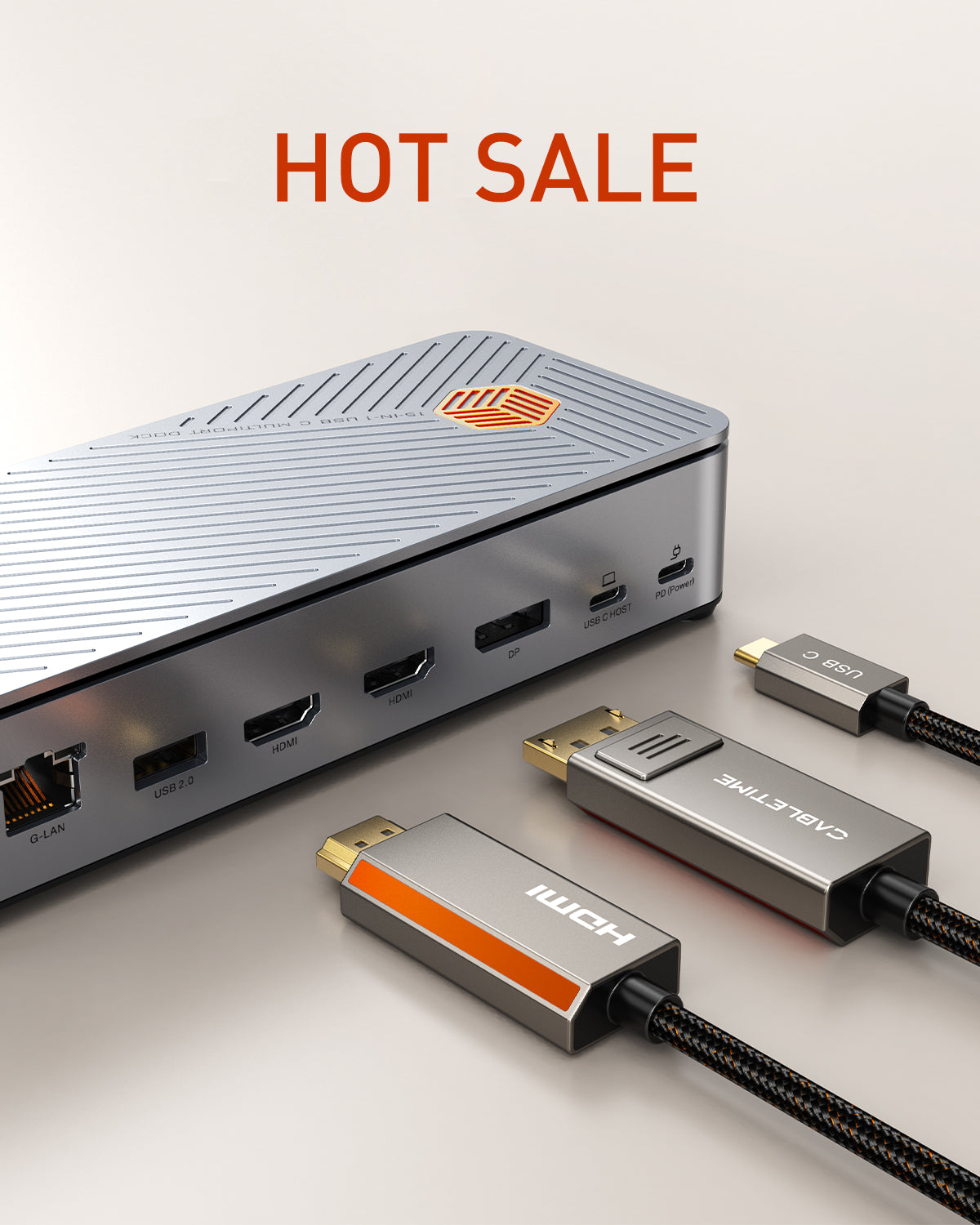
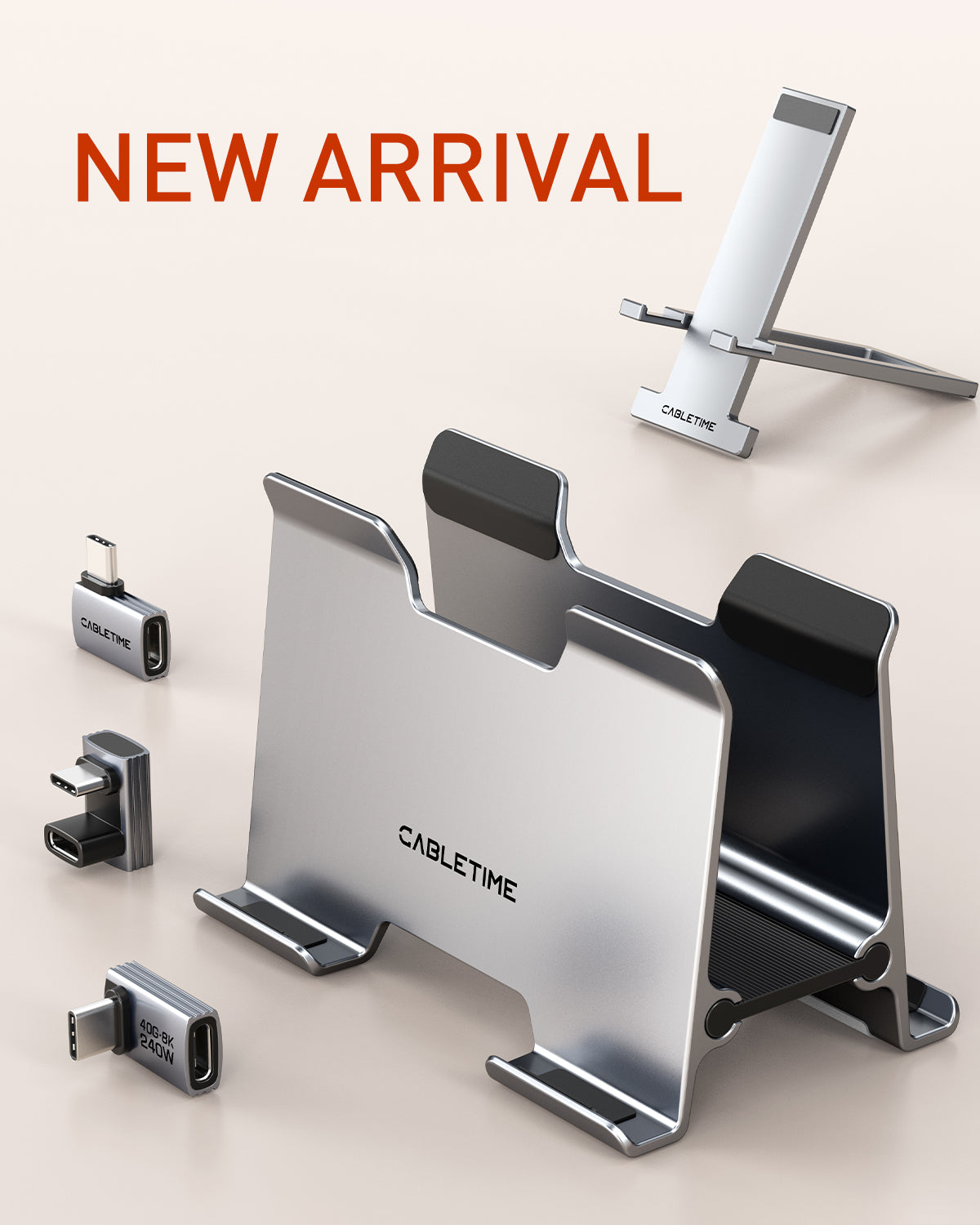
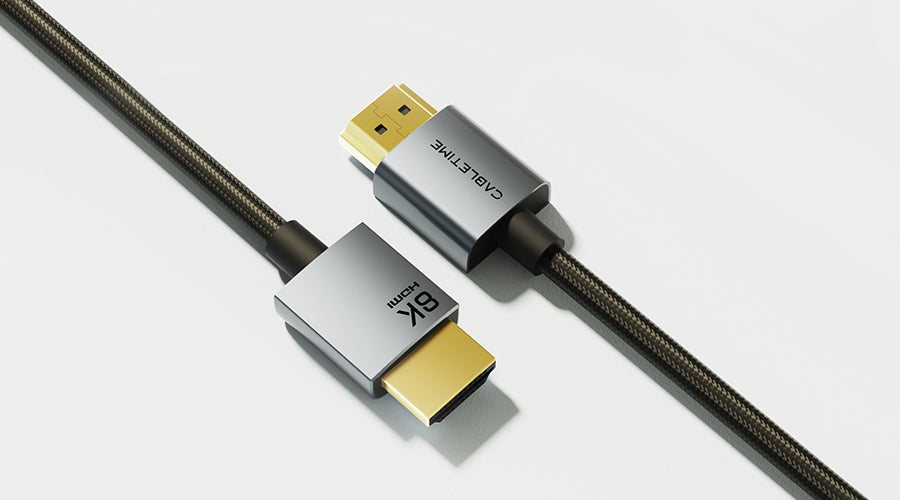
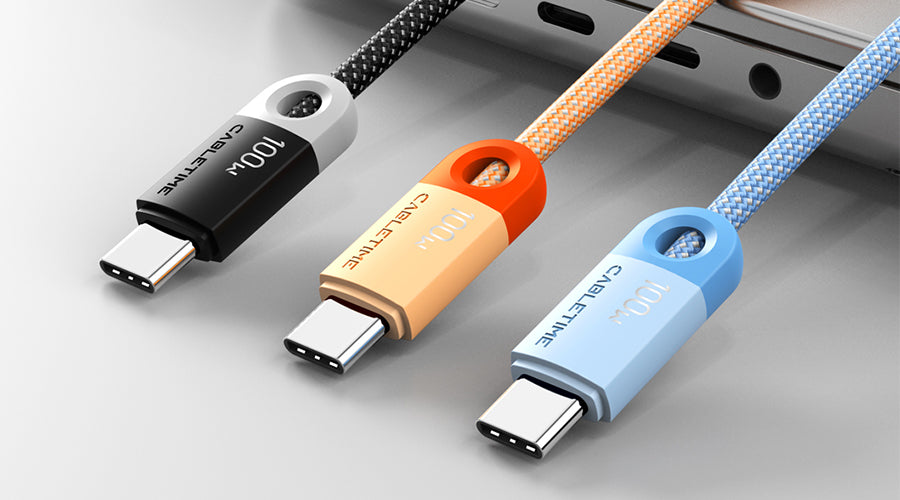
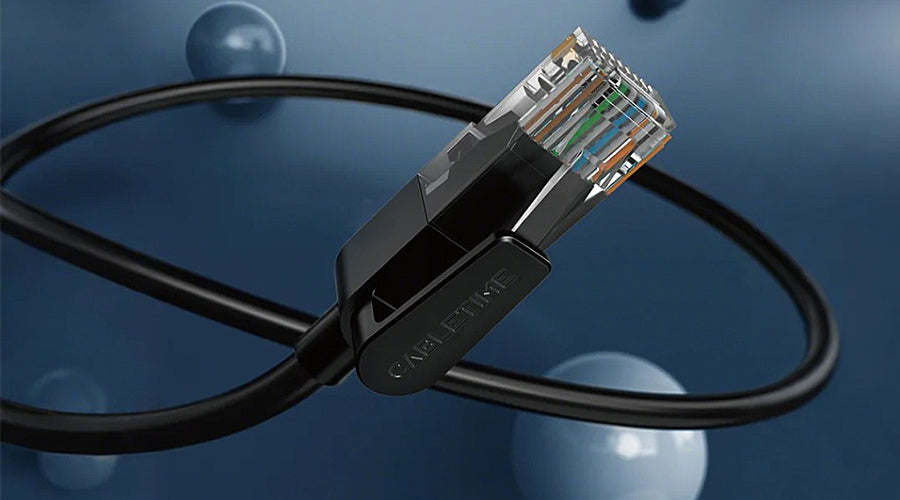
ทิ้งข้อความไว้
เว็บไซต์นี้ได้รับการคุ้มครองโดย hCaptcha และมีการนำนโยบายความเป็นส่วนตัวของ hCaptcha และข้อกำหนดในการใช้บริการมาใช้